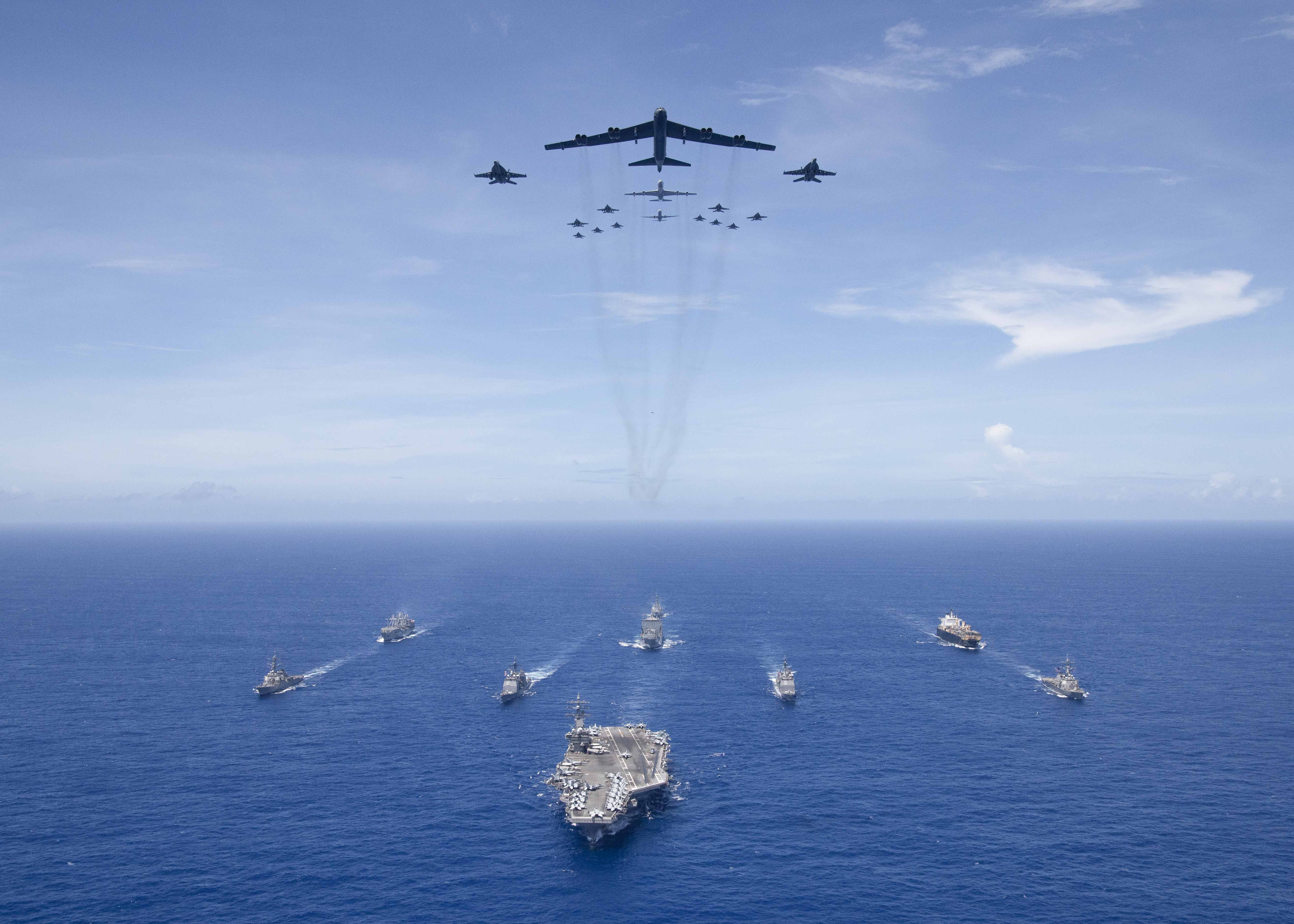

Tasks which are critical to the success of initial crisis response missions are assumed to be undertaken in non-permissive environments characterized by multiple threats including, but not limited to, advanced anti-ship missiles, third/fourth generation fighter/attack aircraft, advanced electromagnetic sensors and The objective is to train and equip forward deploying forces which are balanced, sustainable, flexible, and, most importantly, responsive to the requirements of the supported commanders and able to carry out tasking from The primary obiective in defining the CVBG capabilities and composition is to provide the combatant commanders with adequately balanced capabilities to deal with a variety of present and future threats. Simply put, the mission in peacetime is to conduct forward presence operations to help shape the strategic environment by deterring conflict, building interoperability, and by responding, as necessary, to fast breaking crises with the demonstration and application of credible combat power. From the Sea." It includes capabilities sufficient to accomplish a variety of combat tasks in war, and it serves a wide variety of functions in situations short of war. It is the essential foundation of the ability to conduct operations as envisioned in the most recent edition of the strategic concept, "Forward. Ironically, since the time lag of Soviet military communication systems compared to the NATO ones is quite clear, the old Morse wireless telegraph used by the Soviet ships was the long-established way to solve that problem.While obsolete, strictly speaking, and very limited in information flow, Morse wireless communication was long the most serviceable for the Soviet Navy, owing to its simplicity and reliability.The CVBG is a combat formation of ships and aircraft which comprises a principal element of national power projection capability.
#Us naval battle group how to#
if you see a carrier in plain sight, the only problem to solve is how to radio reliably the reports and targeting data against the US electronic countermeasures. One other incredible detail about the targeting of US carrier battle groups: Given that, the commanding officer of each had orders to behave like a rat caught in a corner: at the moment of war declaration or when specifically ordered, after sending the carrier's position by radio, he would shell the carrier's flight deck with gunfire.He could even ram the carrier, and some trained their ship's companies to do so the image of a “near miss,” of the bow of a Soviet destroyer passing just clear of their own ship's quarter, is deeply impressed in the memory of some people who served on board US aircraft carriers in those years. It was extremely clear that if a war started, these ships would be sent to the bottom immediately. 'The most reliable source of targeting of carriers at sea was the direct-tracking ship' or 'd-tracker', a destroyer or other ship that shadows the US fleet constantly in peacetime, sending back coordinates just in case war breaks out. Tokarev also writes that the naval air force, tasked with sending its bombers against US carrier fleets, did not trust the targeting information they got from satellites or other intelligence methods. note: the name of a missile carried by the US Navy's F-14 fighters) and a screaming prayer, no matter whether it’s somewhere over Hokkaido or directly through the moon, it’ll be the greatest possible thing in your entire life!”

“Son,” answered the major calmly, “if your crew manages to get the plane back out of the sky over the carrier by any means, on half a wing broken by a Phoenix (ed. a young second esh from the air college, asked the senior navigator of the regiment, an old major: “Sir, tell me why we have a detailed flight plan to the target over the vast ocean, but only a rough dot-and-dash line across Hokkaido Island on way back?” Here's an account of an air-crew briefing for a mock raid by Soviet Backfire bombers (pictured) on a US carrier fleet somewhere in the Pacific: So there's plenty of red meat for the military wonks, including the fact that the Soviets planned to send a fleet of 100 bombers armed with anti-ship missiles against a US aircraft-carrier battle group, fully expecting to lose half of them to enemy action.īut there's also wit and drama, which you rarely find in these types of papers. The article is written by former Soviet naval officer Maksim Tokarev, and contains a depth of detail about Soviet military operations that I have never seen before. My thanks to colleague Anthony Bubalo for alerting me to this extraordinary 2013 paper published by the US Naval War College all about how the Soviet Union planned to hit America's aircraft carrier fleet in the event of war (h/t also to Information Dissemination, where Anthony found the paper). A Soviet Backfire bomber escorted by a Norwegian F-16, 1988.


 0 kommentar(er)
0 kommentar(er)
